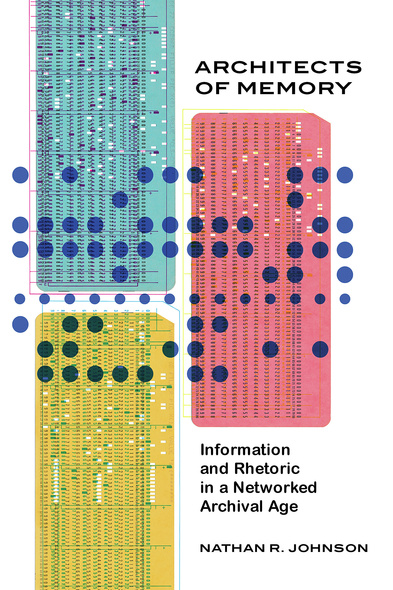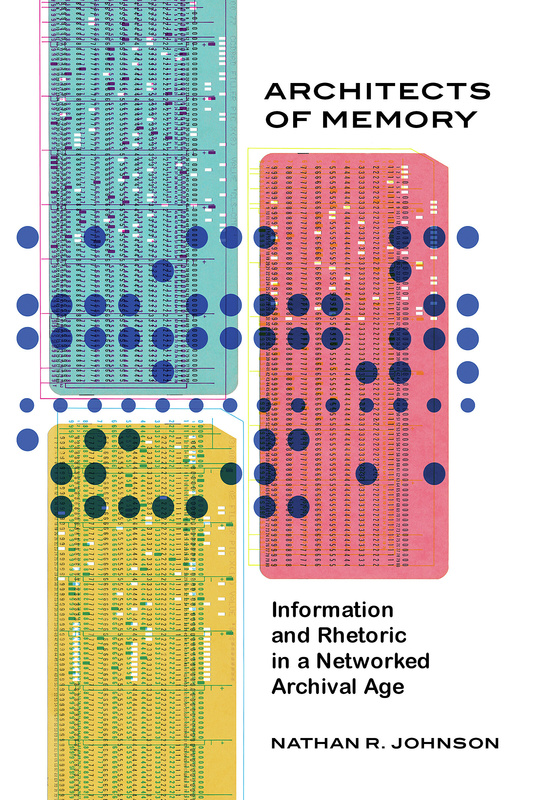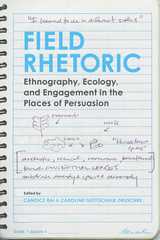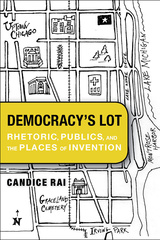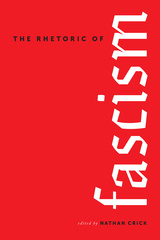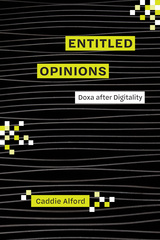Architects of Memory
Information and Rhetoric in a Networked Archival Age
University of Alabama Press
Probes the development of information management after World War II and its consequences for public memory and human agency
We are now living in the richest age of public memory. From museums and memorials to the vast digital infrastructure of the internet, access to the past is only a click away. Even so, the methods and technologies created by scientists, espionage agencies, and information management coders and programmers have drastically delimited the ways that communities across the globe remember and forget our wealth of retrievable knowledge.
In Architects of Memory: Information and Rhetoric in a Networked Archival Age, Nathan R. Johnson charts turning points where concepts of memory became durable in new computational technologies and modern memory infrastructures took hold. He works through both familiar and esoteric memory technologies—from the card catalog to the book cart to Zatocoding and keyword indexing—as he delineates histories of librarianship and information science and provides a working vocabulary for understanding rhetoric’s role in contemporary memory practices.
This volume draws upon the twin concepts of memory infrastructure and mnemonic technê to illuminate the seemingly opaque wall of mundane algorithmic techniques that determine what is worth remembering and what should be forgotten. Each chapter highlights a conflict in the development of twentieth-century librarianship and its rapidly evolving competitor, the discipline of information science. As these two disciplines progressed, they contributed practical techniques and technologies for making sense of explosive scientific advancement in the wake of World War II. Taming postwar science became part and parcel of practices and information technologies that undergird uncountable modern communication systems, including search engines, algorithms, and databases for nearly every national clearinghouse of the twenty-first century.
We are now living in the richest age of public memory. From museums and memorials to the vast digital infrastructure of the internet, access to the past is only a click away. Even so, the methods and technologies created by scientists, espionage agencies, and information management coders and programmers have drastically delimited the ways that communities across the globe remember and forget our wealth of retrievable knowledge.
In Architects of Memory: Information and Rhetoric in a Networked Archival Age, Nathan R. Johnson charts turning points where concepts of memory became durable in new computational technologies and modern memory infrastructures took hold. He works through both familiar and esoteric memory technologies—from the card catalog to the book cart to Zatocoding and keyword indexing—as he delineates histories of librarianship and information science and provides a working vocabulary for understanding rhetoric’s role in contemporary memory practices.
This volume draws upon the twin concepts of memory infrastructure and mnemonic technê to illuminate the seemingly opaque wall of mundane algorithmic techniques that determine what is worth remembering and what should be forgotten. Each chapter highlights a conflict in the development of twentieth-century librarianship and its rapidly evolving competitor, the discipline of information science. As these two disciplines progressed, they contributed practical techniques and technologies for making sense of explosive scientific advancement in the wake of World War II. Taming postwar science became part and parcel of practices and information technologies that undergird uncountable modern communication systems, including search engines, algorithms, and databases for nearly every national clearinghouse of the twenty-first century.
In this strange but important book, Johnson frames 20th-century information management practices with the rhetorical principle of mnemonic techne, as expressed in classical retellings of the myth of Simonides, who was able to identify dinner guests after a roof collapse by picturing their seating arrangement during a banquet. Reading this history alongside the evolution of the Simonides parable induces one to reflect deeply on values underpinning the mechanics systems use to organize knowledge. Recommended.’
—CHOICE
'The book seeks more than a brutalist demonstration of techno-terrorizations over cherished public memories; Johnson rather crafts a subtler architecture, updating the field’s understanding of information systems and archives for ecologically minded scholars sensitive to historical and material influences.... What I found most interesting about the experience of the book is the way that Johnson opens the 'black boxes' of influential library memory systems and pulls out the hidden insides, holding them up to the light like an antiques dealer gleefully discussing each item’s history with astounded on lookers.... In an age of extremist politics, shifting social media landscapes, and the urgent need for racial justice and greater inclusivity, the value of close attention to infrastructure and integrating material factors should feel like crucial inclusions into studies of public memory. This seems almost self- evident, but the thing is: I can’t remember a book quite like Johnson’s. The infrastructural sensibility is certainly going to be needed in future examinations of memory conundrums and complexities. Architects of Memory ultimately demonstrates how to do the work, illuminating an approach to material complexity that does not foreclose an investigation of economy nor of affectivity. Johnson never says as much—perhaps preferring to tell the story and not dwell on all of the theoretical porticos informing his process—but the book brings together older materialisms interested in identity positions and power relations with new materialisms’ focus on how environments are oriented, how bodies are moved into attunements, and how the physiological and technological shift together. For that reason alone, rhetorical scholars should remember this book.'
—Rhetoric Society Quarterly
‘Architects of Memory is poised to make an original and important contribution to the interdisciplinary study of the rhetorics of public memory and information science. Johnson is at his best when illuminating the actual techniques of public memory—the hard, everyday material ways in which key arbiters organize public memory.’
—Timothy Barney, author of Mapping the Cold War: Cartography and the Framing of America's International Power
. . .despite minor quibbles historians might have with his rereading of the fourth canon’s foundational texts, Johnson lays out in his final chapters a convincing vision of what rhetorical memory should mean in the twenty-first century: ‘Memory … can be imagined as a background intensity, a shimmering force to be operated during rhetorical practice … Rhetoricians who learn to play with the available means of [memory] infrastructure learn to participate in the art of memory … and craft mnemonic technê from the bricolage as a ‘means of producing new social possibilities.’’
—Rhetoric Review
‘As our society increasingly recognizes the importance of what information others around us interact with, Nathan R. Johnson’s Architects of Memory: Information and Rhetoric in a Networked Archival Age arrives as an important contribution toward understanding the memory infrastructures that underlie our collective remembering. Johnson defines memory infrastructures as ‘backgrounded resources for practicing memory’ that ‘explicitly obfuscate social issues related to memory because they are built to do just that.’’
—College Research Libraries Journal
Nathan R. Johnson is assistant professor of Rhetoric at the University of South Florida. His work has appeared in the Journal of Technical Writing and Communication, Poroi, Journal of the Association for Information Science and Technology and enculturation: A Journal of Rhetoric, Writing, and Culture.
List of Figures
Acknowledgments
Introduction
Chapter 1. Building Memory’s Infrastructure
Chapter 2. A Universal Memory Machine
Intermezzo: Exorcising the Library Spirit: Library Labor as a Technê of Memory
Chapter 3. Hybrid Memory Labor
Intermezzo: Calvin Mooers’s Zatocodes
Chapter 4. Memory Conflicts
Intermezzo: Dorothy Crosland’s Book Truck
Chapter 5. Memory’s Coin
Chapter 6. Memory’s Infrastructure
Notes
References
Index

